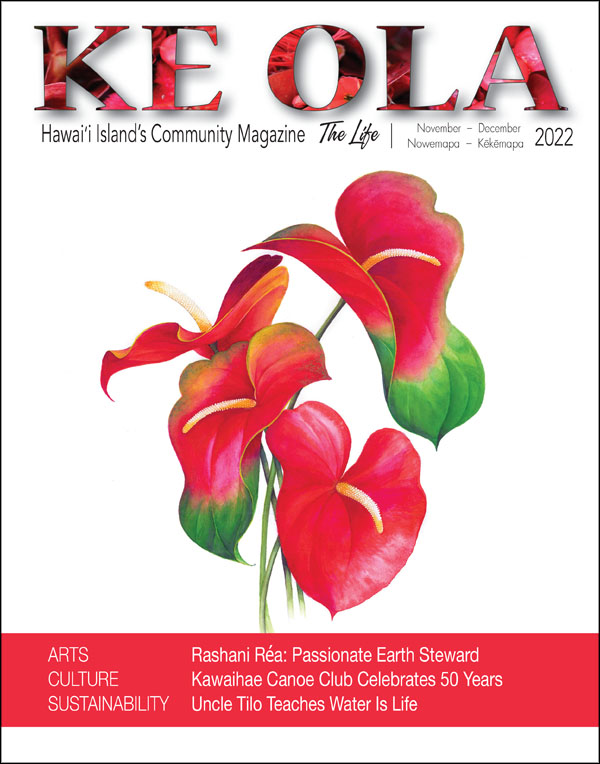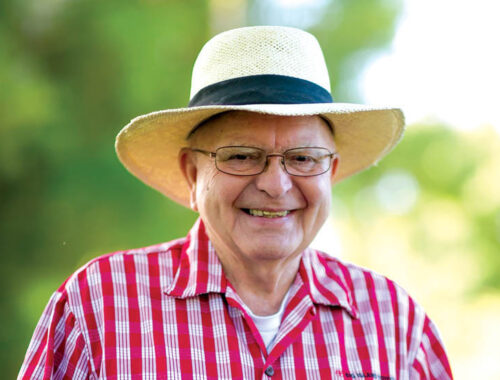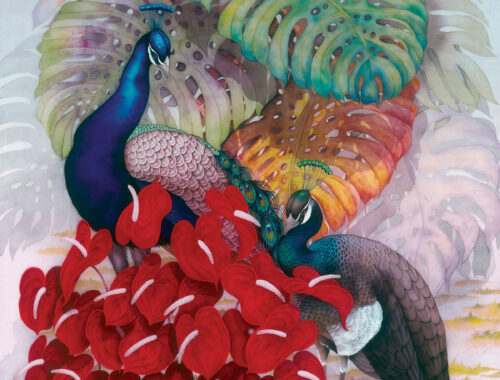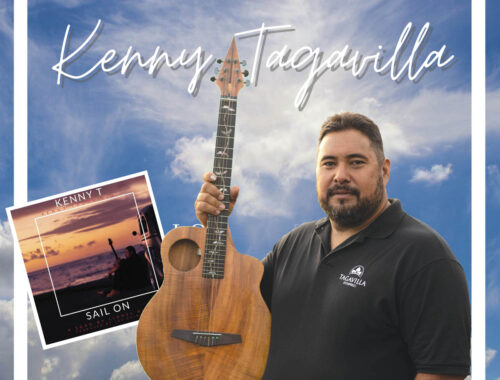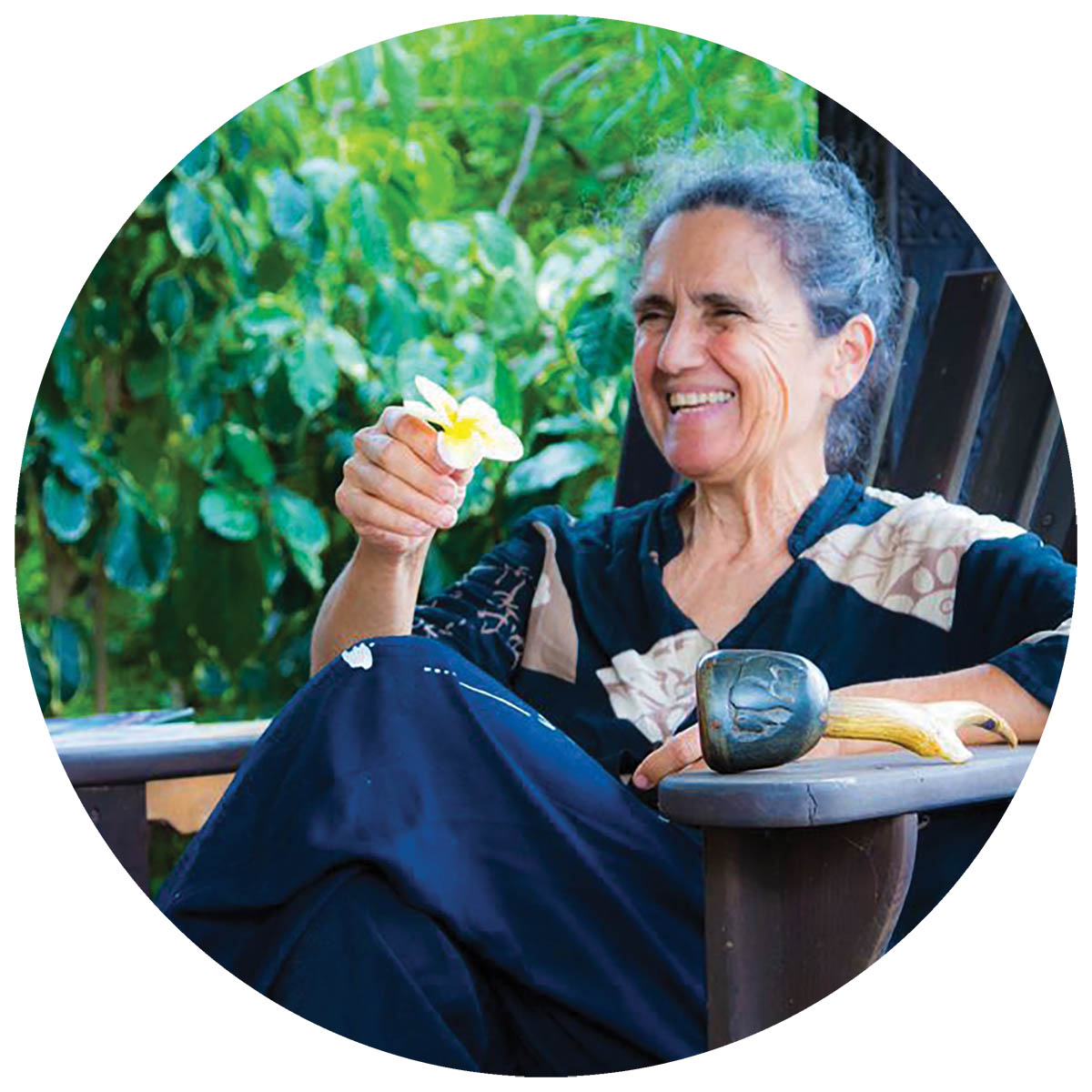
Rashani Réa: Passionate Earth Steward
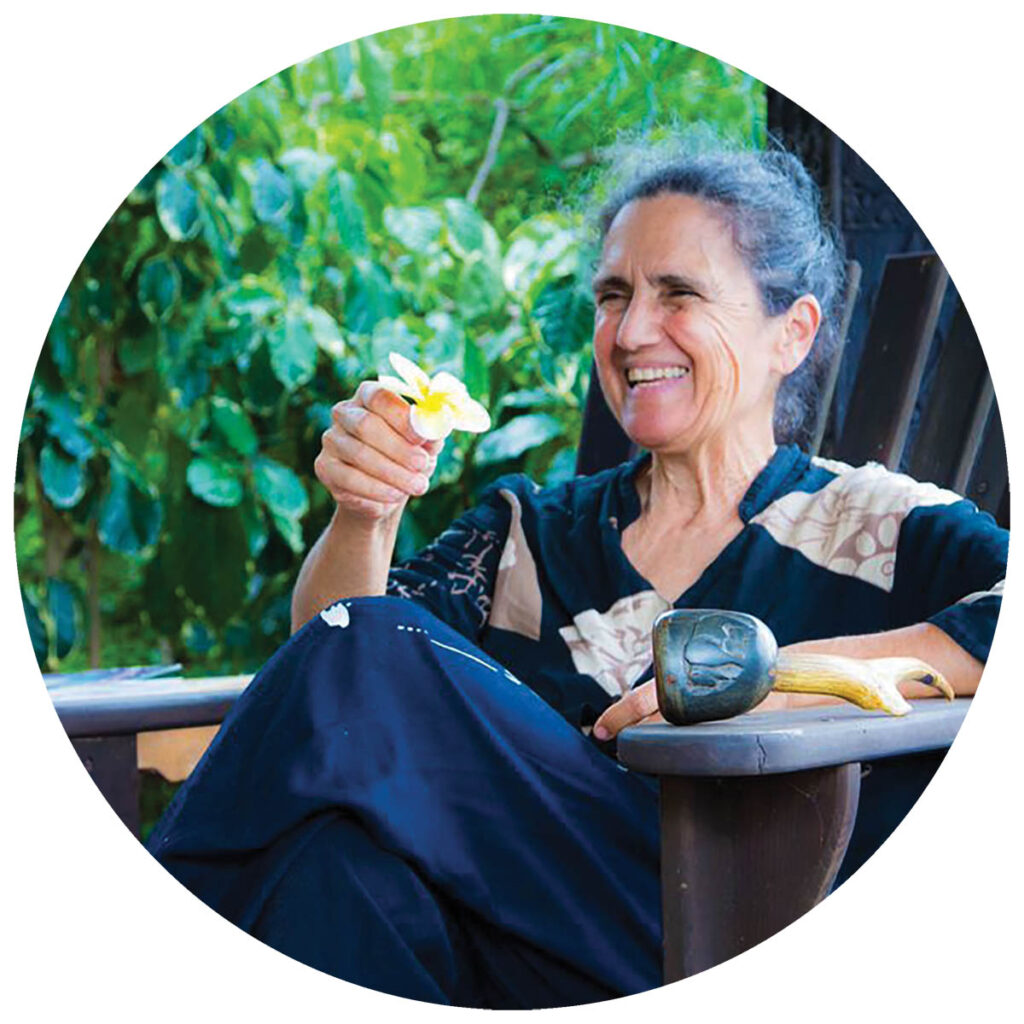
By Karen Valentine
In spring 1988, Rashani Réa rode her motorbike through the vineyards, orchards, and medieval villages of southern France, a frame drum tied onto the back, stopping only to look at her map to find a spiritual community founded by Thich Nhat Hanh called Plum Village. She spotted a hand-lettered sign saying, “Go slowly, breathe, and smile.” Turning in and entering a peaceful garden, she was immediately surrounded by joyful children running up to greet her.
Zen Master Thich Nhat Hanh, known simply as Thây (pronounced “tie”), had escaped the war in Vietnam, helping many other people escape as well. He then established Plum Village—an international monastic community of “Engaged Buddhism,” near Bordeaux.
“From that moment, Plum Village became part of my life,” says Rashani. “Less than an hour passed before I was invited by Thây to sing for the sangha [community] in an oak grove, where many nuns, monks, and lay people were having a picnic.”
Today, living in Hawai‘i, Rashani, a strong yet gentle voice in the interspiritual movement, is herself a world-traveling poet, prolific artist, singer/songwriter, passionate earth steward, skilled group facilitator, and much more. Born and raised in Northern California to Bohemian parents, Rashani’s father was a well-known artist and a professor of aesthetics at Stanford University. She had an unorthodox childhood, hanging around with celebrated composers, artists, writers, and poets. She loved writing poetry and creating art with calligraphy and collage, a practice she continues to this day, printed on cards and published in 40 books. As a young teenager, inspired by Martin L. King Jr. and Sister Corita Kent, she became a social and eco activist.
“My mother would say, ‘It’s too beautiful to go to school. Let’s go to the beach today and write poetry!’ or ‘Let’s go to the museum.’ My brothers and I were immersed in the arts as well as comparative religions and timeless wisdom traditions. Our mother, a Taoist at heart, hosted study groups in which she would share about diverse wisdom traditions and created a summer home school for art, poetry, spirituality, and philosophy.”
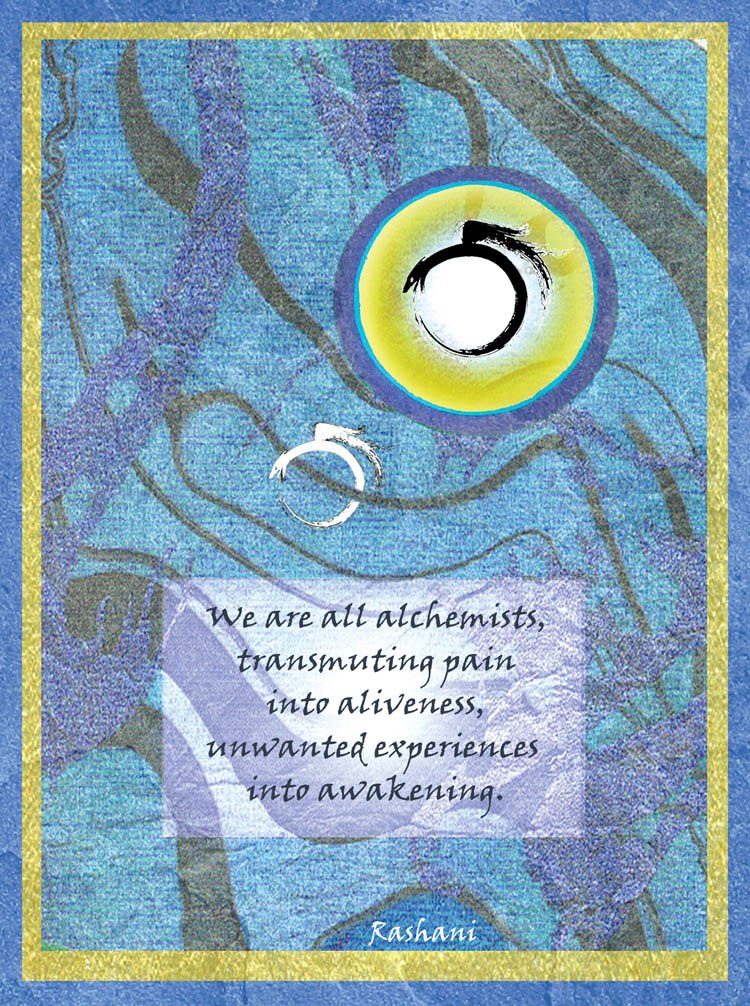
In 1970, during the war in Vietnam, when her brother was ranked high on the draft list, the entire family left everything and moved to England. Three years later, they moved to southern France, where Rashani raised her son and spent 18 years renovating a 17th-century stone farmhouse, which became the first Elisabeth Kübler-Ross center in France.
With her home just an hour and a half ride from Plum Village, Rashani visited often and was invited to open Thây’s dharma talks with poetry and songs.
“I witnessed Thây’s teachings being embodied day after day. Several of the Vietnamese people there were deeply traumatized from the war. Here was this humble, soft-spoken man in brown robes gently accompanying trauma survivors into the miracle of the moment! ‘If we heal the moment, we heal the past,’ was his philosophy.
“Every day, some sort of celebration was happening there. Every hour a mindfulness bell was rung. Whatever you are doing, you stop, and simply breathe. You gently come back to yourself with each breath. There was a calmness there that was so beautiful. It changed my life.”
Deeply moved, creativity poured through Rashani. At the end of her first summer at Plum Village, she was inspired to record an album of songs and poetry. Returning to California, where her son was attending an alternative school, she rented a sound studio and gathered together excellent musicians. Take Refuge in the Moment became her eighth album and one of seven albums inspired by the teachings of Thich Nhat Hanh.
Rashani sent a copy of the cassette to him as a gift of gratitude. A few weeks later, she received a letter: “Thây wants you to know it’s the most beautiful rendition of his poetry that he’s heard.” The letter also said, “Would you like to join us on his US tour to sing at his dharma talks and retreats?” “I felt deeply honored. I sang at his retreats, dharma talks, and large public gatherings in Berkeley, and other cities.” In 1990, she was ordained by Thich Nhat Hanh into the Order of Interbeing.

The Lamps Are Different, but the Light Is the Same
Rashani still creates art, sings, facilitates councils and retreats, and shares the multi-faceted jewels of wisdom she has absorbed over the years, gathered from a vast and varied group of renowned teachers all over the world. Her main focus, however, is caring for 14 acres of rural land in Hawai‘i.
Although mentored and ordained with the Buddhist teachings, Rashani draws from many wisdom traditions, including Native American, which is part of her heritage.
Having been exposed by her parents to a multitude of spiritual traditions, Rashani asks, “Don’t all religions embody a different expression of the same essential truth? I love the Sufi saying, ‘The lamps are different, but the light is the same.’ Whether one is Indigenous, agnostic, Buddhist, Hindu, Muslim, or Christian, the light is the same.”
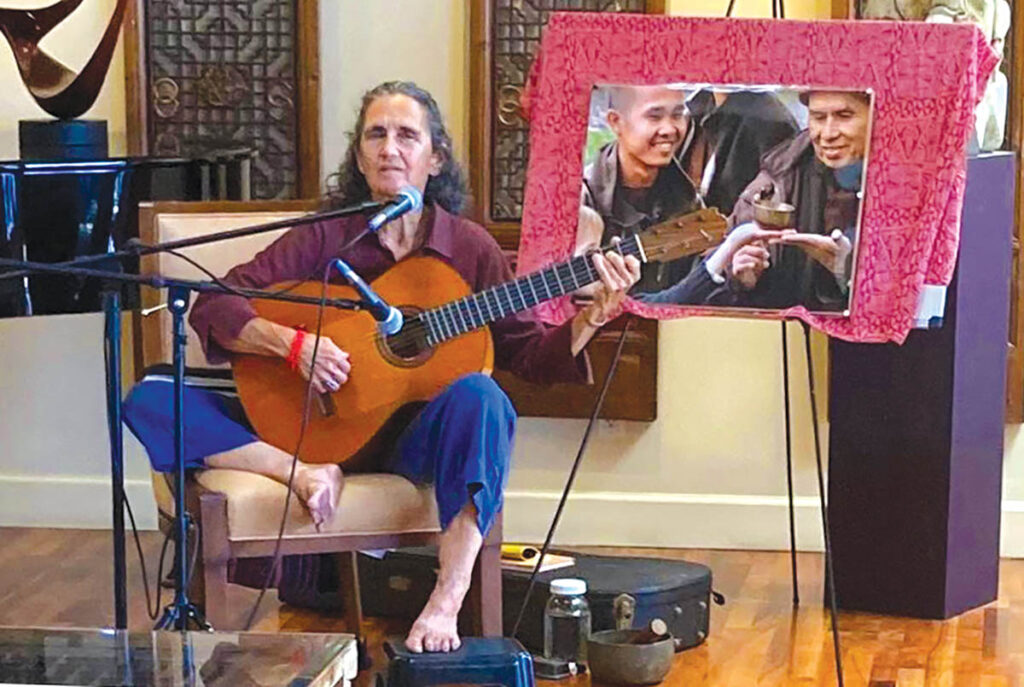
The Song Gatherer
During the 80s, Rashani was inspired to record music, drawing from the energies of many different places, including Hawai‘i. She ended up making 15 albums, the first in 1986, recorded in caves, crypts, and cathedrals in the south of France. She traveled the world offering participatory concerts, councils, and retreats.
“Being a song gatherer, I would gather songs whenever I traveled. Wherever I was I would learn the songs of the people. I first came to Hawai‘i in 1987,” she says, “feeling a calling to record songs inside lava tubes, using rattles and drums and my voice.”
In 1991, shortly after her father’s death, Rashani was diagnosed with advanced Lyme disease. “I had been ill for many years without knowing what I had. My immune system was exhausted. Medical specialists in California told me that I must take intravenous antibiotics for at least 12 months if I wanted to live. I thanked them for their suggestion and instead, I answered another calling and moved to the Big Island of Hawai‘i, where I envisioned having a beautiful year. That same year I wrote ‘The Unbroken’, a poem that has circulated the world.”
There is a brokenness
out of which comes the unbroken,
a shatteredness
out of which blooms the unshatterable.
There is a sorrow
beyond all grief which leads to joy
and a fragility
out of whose depths emerges strength.
There is a hollow space
too vast for words
through which we pass with each loss,
out of whose darkness
we are sanctioned into being.
There is a cry deeper than all sound
whose serrated edges cut the heart
as we break open to the place inside
which is unbreakable and whole,
while learning to sing.
“This poem is my great teacher,” says Rashani. “I don’t actually claim it as mine. It came to/through me as an unexpected gift when I was in the darkest abyss of my life.”
Rashani believes that Pele called to her when she was debilitated, and inspired her to reconnect deeply with the ‘āina (land) and the ancestors of the island. She ended up co-creating a successful retreat center while she slowly healed, and held women’s councils for seven years.
“I was guided and assisted in countless ways by Madame Pele, extraordinary kūmu [teachers], beloved mentors, and ancestral guides,” she says. “Eventually, I discovered how to transform the ineffable cry of anguish into song. I became a death doula and a grief whisperer and have held space for countless people who were imploding with trauma, grief, sorrow, rage, anguish, and anger.”
We Are All Alchemists
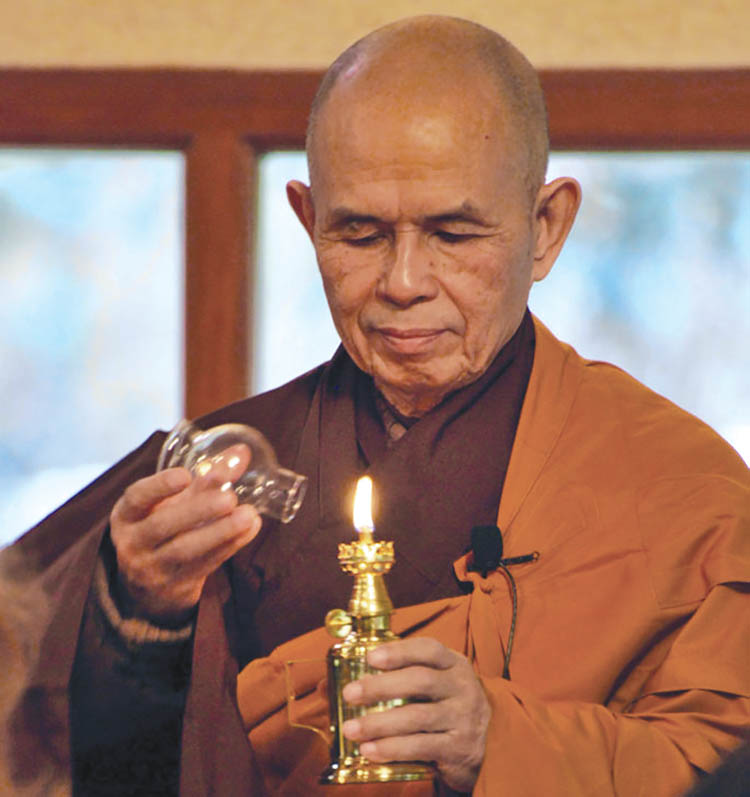
“I asked Pele one day, ‘Why am I here?’ She replied, ‘You’re here to create beauty and alleviate suffering for many people.’” The year 2001 led to another change and move for Rashani. She felt her journey at her sanctuary in Hawai‘i was finished, that her years of retreat centers were complete. Although she started traveling again and seeking her new home throughout many states in the US, she was called back to Hawai‘i, to a piece of land in a remote region of Ka‘ū.
“For me,” Rashani says, “Hawai‘i was where I came to relinquish everything I thought I knew. Pele dismantled who I thought I was so I could reremember who I truly am. I came here to discover primordial grace, to hide out in a way, and be close to the elemental forces, to care for the land and create beautiful gardens after spending time in the busy world interacting with many people. For the first several years, this island was my chrysalis, my refuge, a place where I could be anonymous. It was essential to give back to the ‘āina that had healed me, and then I would return to other countries to cross-pollinate timeless wisdom with many other people. More recently, people have found me and I’ve made myself more available.” ❖
All photos courtesy of Rashani Réa, except Thich Nhat Hanh
For more information: rashani.com
